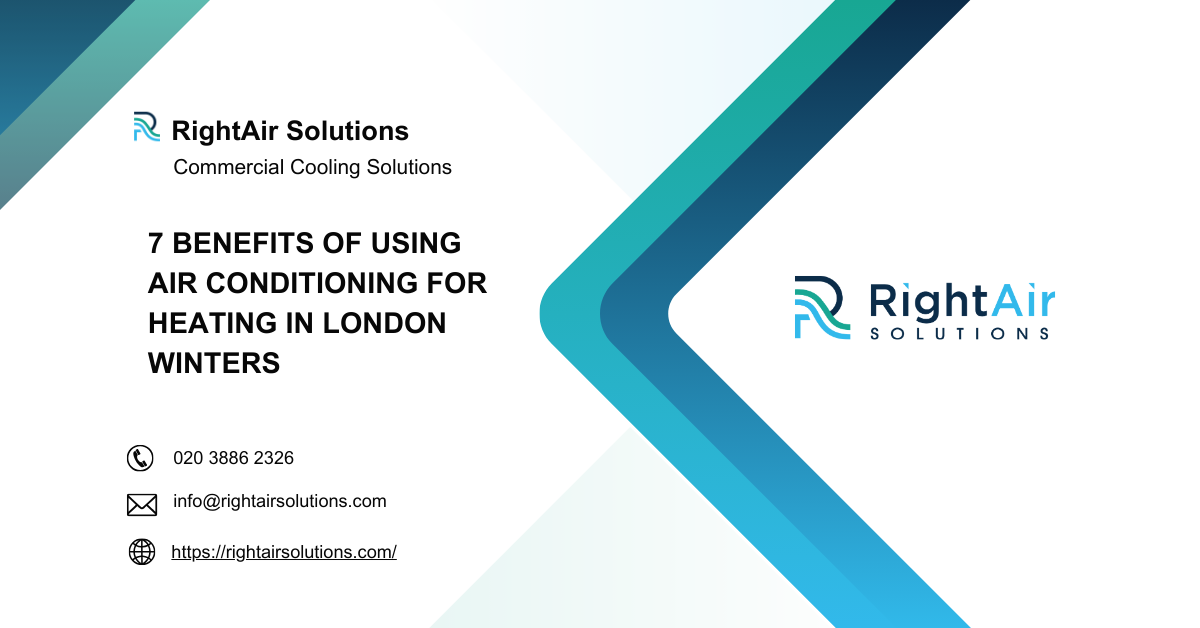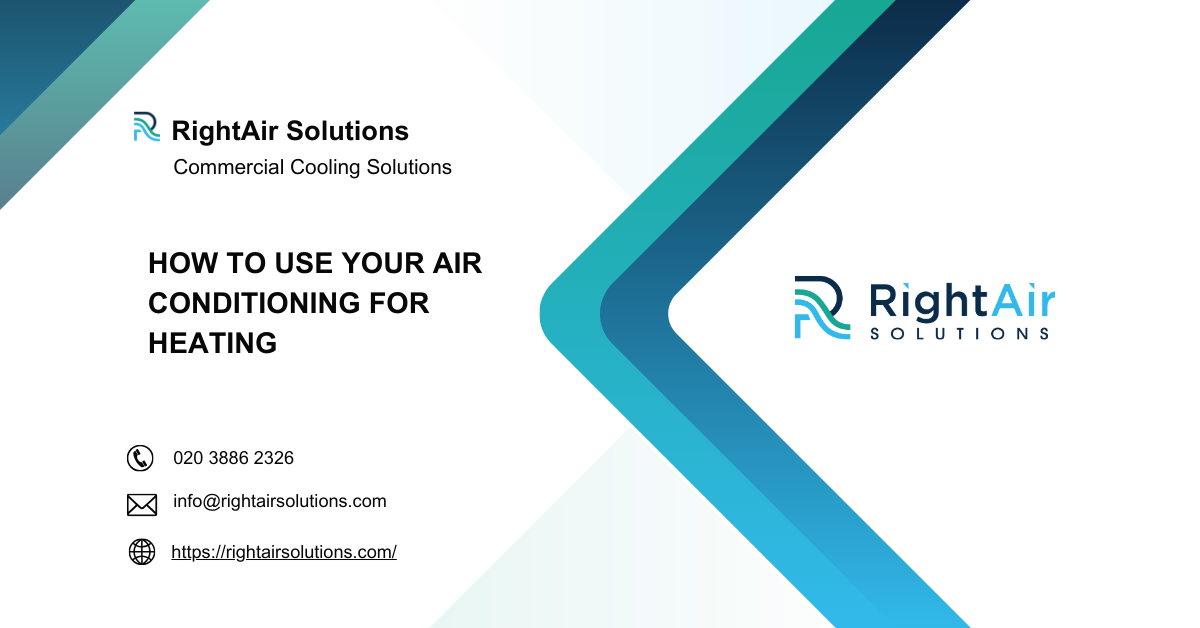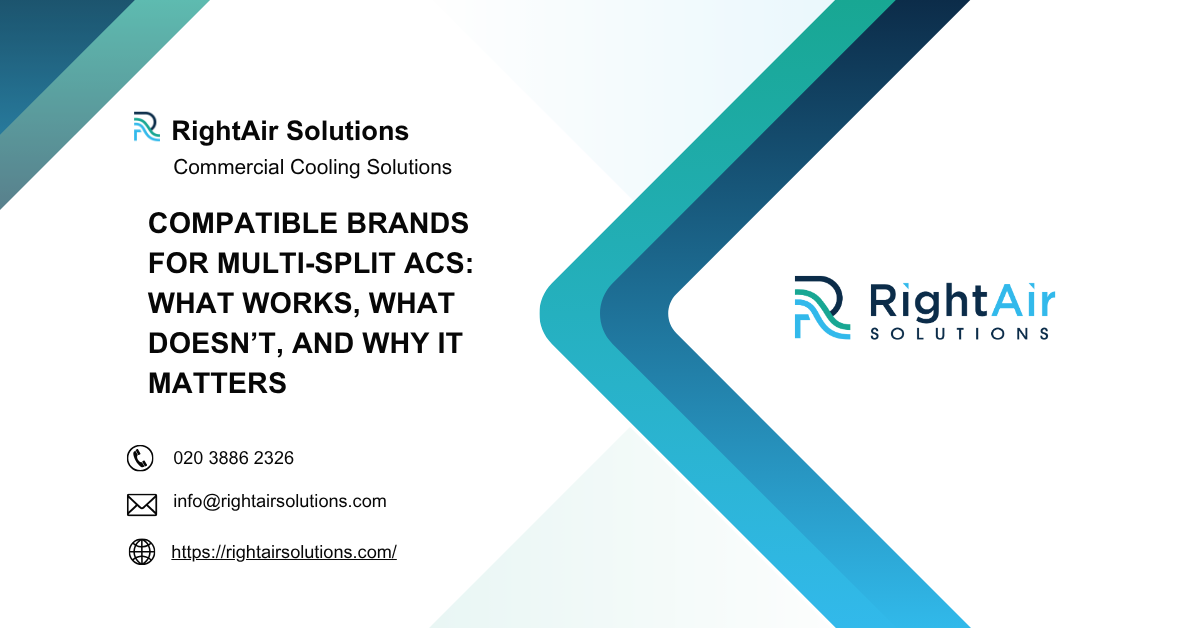
7 Benefits of Using Air Conditioning for Heating in London Winters
Londoners are heating their homes with A/C. Find out why it works better than you think and what surprises could cut your bills this winter.
RightAir Solutions is a company that specialises in commercial air conditioning services.
A heat recovery ventilation (HRV) system improves indoor air quality and energy efficiency by extracting stale indoor air and replacing it with fresh, filtered air from outside while conserving thermal energy. These systems are increasingly adopted in UK homes and commercial properties for their ability to balance indoor climate, reduce heating bills, and enhance occupant wellbeing. Despite the clear advantages, homeowners must consider installation costs, space requirements, and maintenance needs when deciding if an HRV system is suitable for their property.
Heat recovery ventilation (HRV) and energy recovery ventilation (ERV) systems are advanced mechanical ventilation solutions that enhance air quality while reducing reliance on traditional heating systems. Designed to function in energy-efficient and airtight buildings, these systems form a critical component in sustainable building design, particularly in the UK climate.
Pro Tip: If you’re planning a renovation, consider installing ducting at the same time. It reduces labour costs and makes fitting a ventilation system much simpler.
A heat recovery ventilation system continuously supplies and extracts air to and from a building. It captures heat from the outgoing air and uses it to warm incoming fresh air via a heat exchanger. This system is not only energy efficient but also eliminates the need for window vents and extractor fans, making homes more comfortable and quieter.
ERV systems operate similarly but also transfer moisture between the airflows, making them especially beneficial in areas with varying humidity. In the UK, HRVs are often more suited to drier climates or colder seasons, while ERVs may offer more balanced indoor humidity in milder regions.
The system uses a central unit connected to a network of ducting, extracting stale air from wet rooms such as kitchens and bathrooms while delivering fresh, filtered air to living areas and bedrooms. As the two airflows pass each other in the heat exchanger, the outgoing warm air transfers most of its thermal energy to the incoming cool air, without the two air streams ever mixing.
Compared to natural ventilation, which relies on wind and thermal buoyancy, HRV systems provide consistent and controlled airflow regardless of outdoor conditions. This improves thermal comfort and reduces energy wastage in all seasons.
Pro Tip: Change your HRV filters every 3 to 6 months to keep the system working properly and maintain clean air throughout your home.
By constantly refreshing the indoor air and filtering pollutants, dust, and pollen, HRV systems significantly improve indoor environmental quality. This is especially valuable in urban areas, where outdoor air may be contaminated by traffic emissions and other pollutants.
HRV systems benefit individuals with respiratory conditions such as asthma, chronic obstructive pulmonary disease (COPD), hay fever, and rhinitis. The filtration of airborne particles and allergens reduces health risks and creates a cleaner breathing environment, supporting better sleep and daily wellbeing.
Heat recovery systems reduce the energy load on conventional heating systems. By reclaiming up to 95 percent of the heat from outgoing air, these systems lower the need for additional heating, particularly during the UK’s colder months. Over time, this translates to significant savings on energy bills.
An HRV unit maintains consistent internal temperatures by reducing cold drafts and regulating the airflow. The result is a more stable and comfortable indoor environment that adjusts naturally to seasonal temperature shifts.
Excess indoor moisture can lead to condensation, mould growth, and structural issues. HRV systems regulate humidity by extracting damp air and replacing it with dry, filtered air, maintaining a healthy indoor moisture balance.
By maximising heat recovery and minimising energy waste, HRV systems contribute to lower carbon emissions and support eco-friendly housing goals. They are an ideal addition to passive house and low-energy building strategies.
By reducing demand on boilers, heat pumps, and air conditioning systems, HRVs help extend the service life of core HVAC components, decreasing maintenance frequency and system replacement costs.
Say goodbye to stuffy rooms and condensation. Discover our full range of home ventilation systems.
In UK homes, HRVs are increasingly fitted in new builds, renovations, and airtight retrofits. They eliminate the need for trickle vents, improving both energy efficiency and aesthetics.
In office environments and public-facing businesses, HRV systems ensure compliance with ventilation standards while maintaining comfort for employees and clients. Proper airflow reduces the risk of indoor air contaminants, especially in densely occupied buildings.
For schools, nurseries, and community centres, HRVs offer quiet, low-maintenance operation that supports concentration, reduces illness-related absences, and improves overall air hygiene.
Clients across the UK have reported noticeable improvements in air freshness and heating efficiency after installing HRV systems. A London homeowner noted reduced condensation and lower winter heating bills within months of installation. In a school setting in North London, staff observed fewer respiratory complaints and better classroom attentiveness.
To maintain performance, HRV units require regular filter changes (typically every 3 to 6 months) and periodic inspections to ensure optimal airflow. Units with integrated alerts can remind users when filters need replacing.
While basic maintenance such as filter replacement and cleaning air valves can be handled by homeowners, professional servicing ensures systems are balanced and compliant with airflow specifications. Duct inspections and rebalancing are best left to certified installers.
Retrofitting an HRV system in older properties may require careful planning to accommodate duct runs and access for the main unit. Compact and loft-mountable units are available to suit space-constrained homes.
Initial system costs, including installation, can be higher than traditional ventilation systems. However, the long-term energy savings often repay the investment within 5 to 10 years, especially in energy-conscious households.
Modern HRV systems are engineered to operate quietly, but improper installation or neglected maintenance can cause noise issues. Professional fitting and good acoustic design eliminate most sound-related concerns.
Feature | HRV System | Natural Ventilation |
Air Quality Control | High – with filters | Variable, weather dependent |
Energy Efficiency | High – recovers up to 95% of heat | Low – can lead to energy loss |
Humidity Regulation | Consistent | Inconsistent |
Installation Cost | Higher upfront | Lower initial cost |
Operating Cost | Low ongoing | None, but less energy saving |
Compatibility with Airtight Homes | Excellent | Poor |
When selecting an HRV or ERV system, key factors to consider include your property’s size, local climate, ventilation goals, and budget. A professional assessment ensures proper sizing, unit selection, and installation planning.
RightAir Solutions offers free consultations to help homeowners and developers identify the best ventilation system for their needs. Whether for a compact flat, a listed property, or a large-scale development, we provide tailored solutions that meet modern energy and comfort expectations.
When a ventilation system is running properly, you’ll notice your home feeling fresher. You won’t get as much condensation on the windows, and the air will feel lighter. During the winter, you can keep the warmth in without having to crack a window to let fresh air in. In warmer months, it helps balance the temperature and keep stuffiness down.
Families with young children or anyone with allergies often notice the benefits most. With less dust and pollen in the air, it’s easier to breathe. And because the air stays dry and warm, mould and mildew don’t build up in corners or around windows.
If you’re interested in improving the air quality and comfort of your home, speak with one of our ventilation specialists today. We’re happy to talk through the options, answer your questions, and help you plan the right system for your space. We also offer free consultations to help you understand what’s possible with your property.
You can reach out via our website, phone, or email to schedule a time that suits you. Whether you’re upgrading your current setup or building from scratch, we’re here to help.
Heat recovery ventilation systems offer a well-rounded solution for improving air quality, reducing energy consumption, and supporting a healthier indoor environment. While initial setup can be an investment, the long-term returns in energy savings, health, and comfort make them a forward-thinking choice for UK homeowners and commercial property managers.
Contact RightAir Solutions today to learn how our systems can enhance your home or business.

7 Benefits of Using Air Conditioning for Heating in London Winters
Londoners are heating their homes with A/C. Find out why it works better than you think and what surprises could cut your bills this winter.

How to Use Your Air Conditioning for Heating
Think your AC only cools? Find out how it can warm your home too. Learn settings, tips and secrets to save energy while staying cosy this winter.

Compatible Brands for Multi-Split ACs: What Works, What Doesn’t, and Why It Matters
Think any AC brands can mix? Think again. Find out what works, what fails, and how to avoid a pricey setup mistake in this easy guide.
RightAir Solutions

At RightAir Solutions, we provide air conditioning services to domestic and business customers for heating and cooling units. We also supply and fit commercial AC and HVAC services with our insured, qualified and experienced London team of air con engineers.